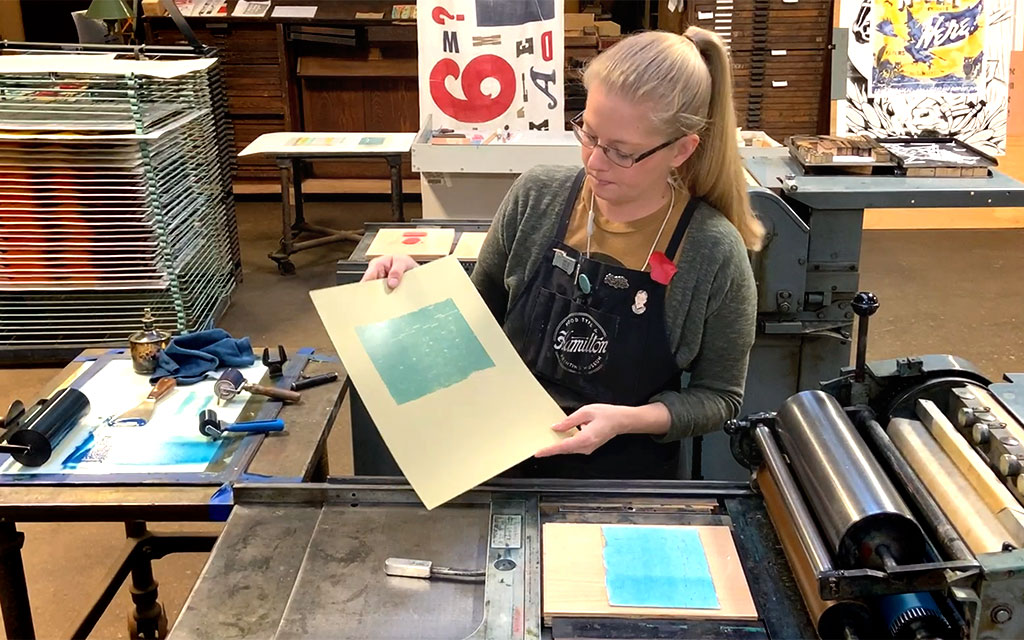Stephanie Carpenter—Play on Press
 Sun, Nov. 8 | Stephanie Carpenter, the Program Officer at the Hamilton Wood Type Museum, and one of the hosts of the Awayzgoose presented a variety of techniques for printing during a 45-minute demonstration. Stephanie began her demo by sharing her process for working with wood type by creating a poster with the museum’s slogan of “Visit, Learn, Print, Repeat.”
Sun, Nov. 8 | Stephanie Carpenter, the Program Officer at the Hamilton Wood Type Museum, and one of the hosts of the Awayzgoose presented a variety of techniques for printing during a 45-minute demonstration. Stephanie began her demo by sharing her process for working with wood type by creating a poster with the museum’s slogan of “Visit, Learn, Print, Repeat.”
Stephanie emphasized the theme of using historic things in new ways. She selected some wood type and carefully documented the locations from which the type was pulled. This seemed especially important since the museum has over 1.5 million pieces of wood type in its collection. Stephanie noted that she chose while bearing in mind the limitations of the size of her paper. By using a sign press and holding the type in place with magnets, she was able to ink up the type with black ink and proof it on tracing paper using her hand to burnish the type. Stephanie then used scissors to cut the proof apart and make a rough layout of the poster. This also prompted Stephanie to consider how press runs would follow from her design choices and how she might embellish a poster using inventive methods.
Adding texture to prints with monoprints can be combined with printing from wood type. Using a brayer and working directly on the surface of her print, Stephanie used surfaces in the museum, such as antifatigue standing mats in the press room, to print interesting textures. She recommended laying a piece of scrap paper down on the texture source (the standing mat), then stacking the print on top of that, and rolling the brayer on top. This kept the back of the print clean.
Stephanie then demonstrated how non-traditional items could be brought up to type high to be printed. Printing these matrices by hand inking with a brayer and using a sign press or Vandercook cylinder press to provide impression was recommended. Using a board with a piece of plexiglass that was just under type high (0.918″) as a base, Stephanie could mount a variety of items to type high with the adhesive backing for mounting polymer plates to Boxcar bases. Materials such as envelopes and paper from player piano rolls (reinforced with chipboard and matte medium) can be brought up to type high. Another option Stephanie shared was mounting self-adhesive children’s foam, which could be shaped easily with scissors or a Japanese screw punch.
Using these alternative methods to print a textured background image first and then printing the wood type on top could achieve dynamic results. Combining traditional wood type resources with more innovative printmaking methods allowed for play at the press. Thanks to Stephanie for sharing a variety of techniques in a short time and for hosting the Awayzgoose with such good cheer!

